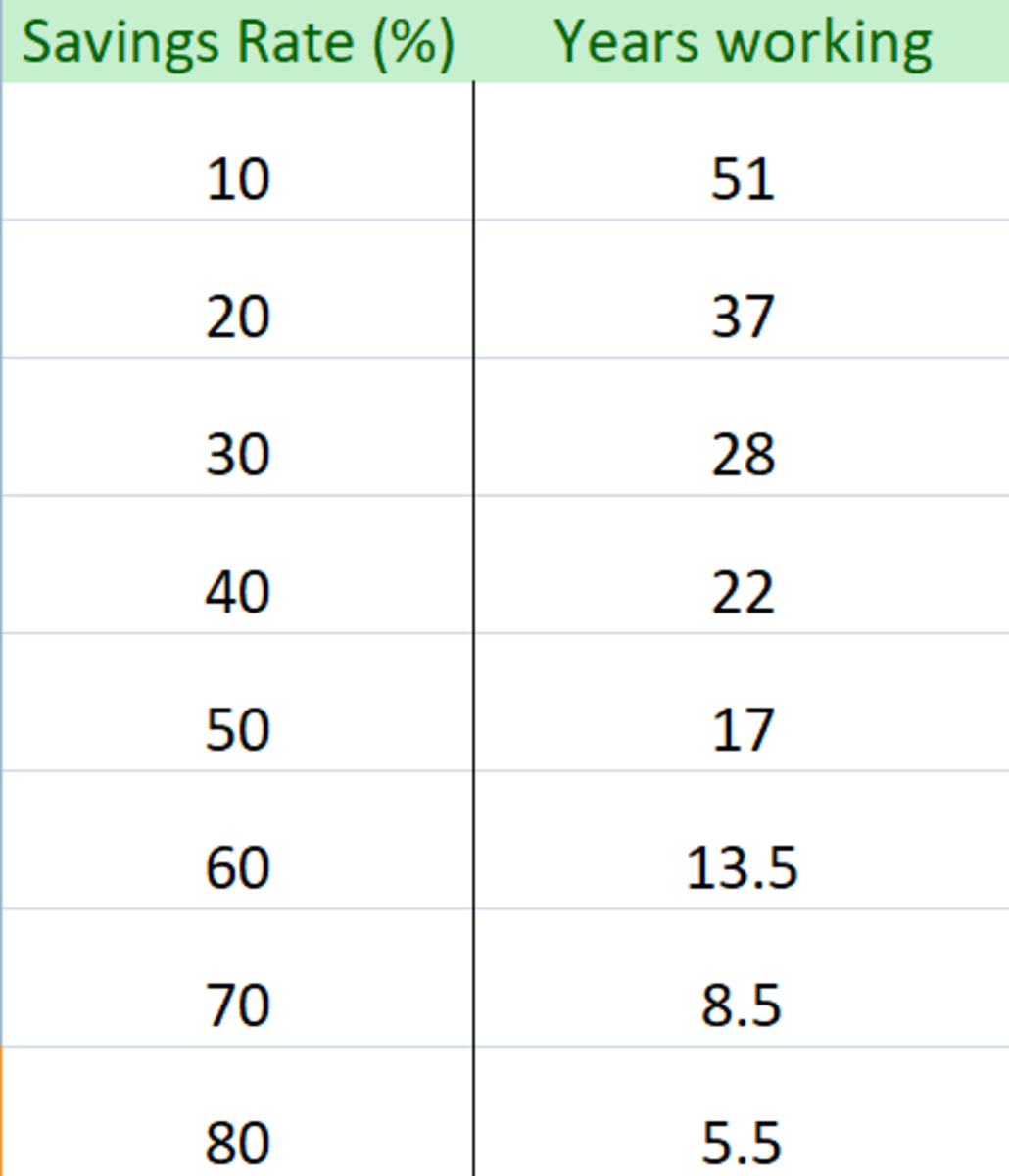Role of Annuities in Retirement Income Planning
The Promise of an Income for Life
In a previous Hub, Using Annuities to Guaranty Retirement Income for Life, I explained what fixed annuities were and how they operated.
The key attraction of fixed annuities (which are not to be confused with variable annuities which are a related but quite different product) is their ability to guaranty a fixed stream of income for life.
Owning an annuity means that you will receive a check (or, now days, an automatic deposit to your bank account) from an insurance company every month for the rest of your life. Further, regardless of what happens to investment rates in the market, your monthly check will constant constant until you die.

View Fixed Annuities as a Tool - Not a Solution
The ability to guaranty a fixed income for life makes fixed annuities sound like the perfect retirement investment. They are almost like Aesop's fable about a farmer and his wife who discovered that one of their geese had the ability to lay an egg of pure gold every day - they thought they were set for life.
Following the recent world wide market crash during which many people watched as their retirement savings shrunk almost over night by as much as 50% or more, fixed annuities suddenly looked very attractive.
Fixed annuities have become so attractive that many academics, financial advisers, bureaucrats, political activists and, of course, those who sell fixed annuities, have been touting them as the ideal retirement savings vehicle.
The government of the United Kingdom has gone so far as to pass a Compulsory Annuity law which appears, from what I have been able to find, to require that UK citizens either move their retirement savings to a fixed annuity by age 75 or face heavy tax penalties.
However, to use the late economist Milton Friedman's favorite phrase, There is no free lunch and this applies to fixed annuities as well. Despite the beauty of their promise of a guaranteed income for life is, fixed annuities have some warts as well.
Inflation
Fixed annuities first blemish is inflation. Retiring with income from a fixed annuity at 65 and then living to 95 is the same as a 22 year old college graduate going to work on their first job and not receiving a pay raise until they are 52.
I don't know about you but I would need food stamps and welfare to feed my family if my pay was the same as when I was 22.
During my younger days when I was in high school and college, we were taught that fixed annuities were a poor investment choice because the income was fixed while inflation steadily eroded the purchasing power of that fixed income.
And it wasn't just theory from teachers as I watched my retired grandmother struggle to live on a fixed monthly Social Security check (this was the era before the COLA or annual Cost of Living Adjustment legislation by which Social Security payments are automatically adjusted upward with inflation in order to keep their purchasing power unchanged) which purchased less and less as a 20+% inflation rate drove prices ever higher.
President Jimmy Carter's bowing to pressure and appointing Paul Volcker as Chairman of the Federal Reserve in 1979 and Carter's loss of the 1980 election to Ronald Reagan brought an end to the government's misguided Keynesian policies of printing and spending money with abandon that began with President Roosevelt's New Deal and continued by his successors until the economy almost collapsed under President Carter.
The three decades since the Britain's Prime Minister Margaret Thatcher and U.S. President Ronald Reagan led the world in abandoning the reckless Keynesian economic policies have been years of stable money and economic growth. Stable and even falling prices have again made fixed annuities a good investment.
However, there is no guarantee that governments will not again embrace policies, as they have throughout history, that cause currencies, especially paper money printed by the government, to depreciate. Inflation in fact is becoming a concern as the present Administration of Barack Obama has saddled us with over a trillion (that is a million times a million) dollars worth of debt with more promised.
Other world governments have reacted to the 2008 financial crisis in the much the same manner which led one CNBC commentator to point out at the time that the total planned spending by all of the governments of the world exceeded the total amount of money available in the world.
The U.S. Federal Reserve and central banks of other nations have pumped billions of dollars worth of money into banking systems around the world. If these banks suddenly start lending these excess reserves the world will be awash in currency and hyper inflation will run rampant.
Once You Start Receiving Income From a Fixed Annuity You Can't Change Your Mind
A second blemish is that fixed annuities are, in most cases, irrevocable. Once started, the money is locked in and generally cannot be returned other than in the form of the monthly payments.
As I stated in the previous article, annuities work in part because the insurance company knows that most people in the pool will continue to live the average number of years needed to use up the funds invested while a few will die early and a few live beyond the projected age, with the funds of those dying early being used to continue payments to those living the longest.
However, with people living longer than in the past and increasing numbers living up to a third of their lives in retirement this is a long time to have one's life savings locked up and untouchable.
While a monthly check for life is great, one's circumstances can change over the course of one, two or three decades and not being able to redeploy one's assets could be a problem.
Multi-Payment Fixed Annuities Pay a Low Rate of Return
A third blemish is their rate of return make fixed annuities a poor choice of investment for a younger person's retirement account.
In order to get a decent monthly income from an annuity one has to invest a large sum, $100,000 or more and most younger people do not have this kind of money available. Of course, over the course of thirty or forty years of working before retirement, one can accumulate this and a multi-premium deferred annuity offers the opportunity to do this.
However, most annuities pay a single digit rate of return on funds in plans in the deferred stage so, while your funds will be very safe, they also won't grow very fast.
Secondly, while one has to invest after tax income (i.e. money earned and subject to this year's income tax) in a deferred annuity, the earnings on that investment grow tax free (these earnings are then taxed as ordinary income when they are paid out as the monthly income in the future).
This tax treatment makes annuities attractive but money invested in other retirement accounts also grows tax free and, in the case of traditional IRAs and 401(k)s, the payments deposited to these accounts are deducted from the current year's income.
Given these drawbacks fixed annuities are generally not a good investment for younger people and are best left until they are closer to retirement.
However, Fixed Annuities Can Be a Good Investment
Despite the warts and blemishes described above, fixed annuities are a good investment for most people to consider when allocating their retirement assets.
Links to My Other Hubs on Retirement Topics
- http://hubpages.com/_fcab/hub/Dying_Intestate
- The Social Security System's Achilles Heel
By now most everyone is aware that the Social Security program is not a sound program financially and that it is only a matter of time until it goes broke. Even its supporters admit that the only way to keep... - How to Payoff Your Mortgage Early
A mortgage is usually the biggest debt that most indiviuals or families have. A mortgage is basically a loan that is secured by real estate or real property, meaning that if you do not re-pay the loan, the... - Defined Benefit vs Defined Contribution Pension Plans
Along with paid vacation time off and health insurance, retirement benefits are probably the most sought after employer provided benefit. Pensions provide employees with the opportunity to accumulate the... - Using Annuities to Guaranty Retirement Income for Life
Thanks to better health overall and improved health care, people are living longer after they retire. In times past, retirement usually lasted a relatively few short years - people retired from work and died... - Including Health in Retirement Planning
While practicing healthy habits throughout life is important, some financial planners are now suggesting that health be a consideration in retirement planning as well. Generally we tend to look to financial...
Coping With Inflation
While it is true that inflation is always a possibility and that current government policy points to the possibility of future inflation, this is a possibility and not a certainty.
In the discussion of inflation above, I cited the huge spending programs that the U.S. and other governments have initiated recently. That's the bad news.
The good news is that the billions pumped into the banking systems of the world have tended to sit in the bank's vaults and have not made their way into the market.
I also misspoke slightly when I referred to government's printing money - that was in the past as today's method consists of central banks taking steps to increase banks' reserves thereby enabling the banks to lend more. The result is the same as printing money.
However, whether central banks print and ship paper money to banks or electronically increase each bank's reserve account with the central bank, the process is not inflationary until the banks actually lend the money and so far this has not begun to happen.
I also mentioned the spending programs enacted by the world's governments that call for spending more than the total amount of money in existence in the world today.
If opposition to the inflationary spending plans of the world's governments prevent these governments from spending that money and if the private sector regains its health and economies begin to grow before tapping the the reserves currently in the banking system the result will be a continuation of the last three decades of growth and stable money.
However, if governments decide to push forward with their huge spending plans and finance them by borrowing from the huge reserves of phantom money sitting on the servers of the central banks then hyper inflation will be the likely outcome.
The prudent course for individuals at or nearing retirement in this uncertain situation would be assess their needs and expected remaining life and diversify accordingly. While there is no one size fits all solution, there is a vast range of financial instruments that can be used to tailor a plan that fits individual needs. There are also numerous advisers and vast libraries (on the web and in print) of resource materials which can help with decision making.
Locking In Your Funds
The old adage, Don't put all of your eggs in one basket, is probably the best advice here. Of course, each individual's situation is different and there may be cases when putting all of one's retirement savings into a fixed annuity is good advice, but for most, a fixed annuity should probably be a part of ones basket of retirement funds but not the entire plan.
Fixed annuities and other lower return but more stable investments became very popular following the 2008 market crash. Many people were greatly disappointed to see their retirement savings reduced by 50% or more almost over night.
However, only two groups of people actually lost retirement fund money in that crash and those were people who were already retired and were living on monthly withdrawals of both principal and investment income from 401(k) and IRA accounts.
Those who panicked and converted investments in stocks and mutual funds in their retirement plans to cash or more stable investment vehicles after the stock and mutual fund investments had lost much of their value were hurt by the financial crash. Those who did not liquidate investments in stocks and mutual funds have already seen these investments begin to regain their previous values.
Fixed annuities can be a way to insulate a portion of your retirement portfolio against market downturns but should not be the only investment as they do not rise with market upturns or keep pace with inflation.
Alternatives to Relying on Annuities
Traditional conventional advice has been for young people to invest retirement funds in things like stocks and mutual funds. Then, as they near retirement, begin to convert the retirement funds to more stable investments like bonds, certificates of deposit (CDs) and, recently, fixed annuities.
However, with people living longer and inflation always a possibility, some advisers are now recommending that people keep a portion of their retirement portfolios in growth instruments like stocks and mutual funds.
There are a number of ways to build a diversified portfolio that includes a fixed annuity. One way would be to start investing in growth investments in an IRA and 401(k) early in ones career and then, when the person is close to retirement age, convert a chunk of the accumulated funds into a fixed annuity.
Another way, for those who can afford this, would be for young people to make the maximum allowable annual contributions to their IRAs and 401(k)s and then invest additional funds in a variable annuity.
Variable annuities offer the same tax deferral advantages as fixed annuities but allow buyers to invest the funds in groups of mutual funds giving the same growth advantages as stocks and mutual funds. The funds in the variable annuity can then be converted to a fixed annuity at retirement.
There are, however, significant costs associated with variable annuities which reduce the amount of the regular deposits being invested so variable annuities are not for everyone.
Other possibilities include retiring and then continuing to work while also receiving a pension and/or withdrawing income, but not principal from a Roth IRA and investing the pension and IRA income in a multi-payment deferred fixed annuity.
You can do the same with Social Security payments but if you continue to work don't start collecting it until you reach the age when there are no penalties for employment.
This will allow you to build a future guaranteed fixed income without converting all your other retirement savings into the annuity.
Good Planning is the Key to a Prosperous Retirement
Thanks to longer life expectancy and more post career lifestyle options, retirement is no longer a simple matter of leaving work and enjoying a few years relaxing in your rocking chair on the front porch while marking time with your gold retirement watch and paying bills with the monthly Social Security and pension checks while waiting to die.
Today, retirees can look forward to spending as much as a third of their life in retirement and that requires some planning in order to ensure that this portion of life is not spent in poverty.
Given the many lifestyle options and investment options along with unforeseen opportunities and pitfalls ahead in one's remaining decades of life there is no one size fits all plan to follow.
This means that each person who wants to enjoy their remaining years have to give thought to their particular needs and wants and then seek the advice of financial and tax experts when making plans and decisions regarding the type of retirement they want.












